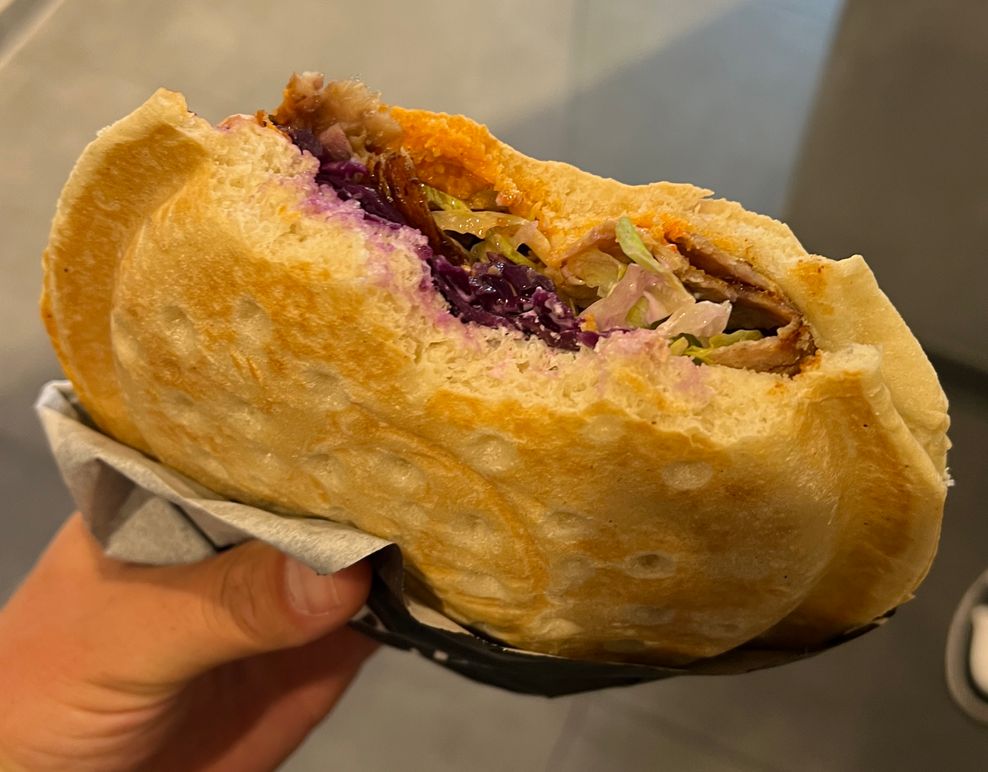After a month of house hunting, Rehana Vhora came up empty. All the homes she looked at either were too rundown or too expensive.
Then, she happened upon a new housing tract while heading to a home tour in Corona. After checking out the model homes, she discovered that if she bought a new three-bedroom townhome, the builder would throw in $15,000 to lower her mortgage rate and pay her closing costs.
“They offered me credit. They paid all my closing costs,” the mother of twin teen-age daughters said. “The price was right. It’s new. (And) there’s lots of amenities.”
Like Vhora, many buyers are switching from a tight resale home market to buying new, thanks to greater availability and to builder incentives that make new construction more affordable.
The doubling of mortgage rates in 2022 deterred many homeowners from listing their homes for sale, creating a shortage of existing properties.
With 86% of homeowners having interest rates below 6%, “they’re not financially incentivized to sell in today’s elevated rate environment,” said Odeta Kushi, deputy chief economist of First American Finance Corp. “The existing homeowner will simply choose not to sell if they don’t have to, whereas builders need to move their inventory.”
Mortgage-rate buy-downs and cash incentives have made new homes even more desirable, said Tom Grable, 2024 chair of the California Building Industry Association and the Southern California division president for Tri Pointe Homes.
“With the resale market being really suppressed by people not putting their homes on the market, new homes become more attractive,” Grable said. “Over the last year or so, the new home market has really been kind of a normal market.”
Nationally, the so-called “builder’s advantage” appears to be more pronounced than in Southern California.
New homes accounted for about 30% of total U.S. homes for sale as of June, numbers from Zonda and First American show. That’s more than double the 14% average over the past several decades.
UmeAbiha Naqvi and her husband, Ibrahim Zaidi, in the loft of their new home at the Bedford development in Corona on Thursday, Aug. 22. After getting outbid two or three times on resale homes, the couple shifted their focus to buying a new home. (Photo by Nick Koon, Contributing Photographer)
Similar numbers weren’t available for Southern California, and sales numbers show declines both for new and existing homes. But the declines were bigger for existing homes, CoreLogic figures show: existing home sales fell 24% from pre-pandemic levels, compared with an 18% decline for new homes.
And that’s despite a 31% drop in the number of housing developments in the region, said Ali Wolf, chief economist for new home research firm Zonda. Sales rates for those developments have been steady.
“There’s (fewer) communities open,” Wolf said. “But the ones that are open are able to capture the sales and are able to retain the level of share that they’ve had in the past.”
Inland sales rising
The builder’s advantage also is more pronounced in the Inland Empire, where there are almost twice as many homebuilding projects than in Los Angeles and Orange counties.
Coastal counties had a 44% drop in new home sales since 2019. Inland Empire transactions, on the other hand, increased 21% over the past five years, according to CoreLogic.
“Oftentimes, new homes are less expensive relative to existing homes than they’ve been in the past,” Wolf said. “And that has helped people say, ‘You know what? A new home makes sense. I can pay a high dollar amount, but I’d have to pay that on an existing home anyways. But at least I’m getting a brand new product that I can customize a little bit.”
Commercial airline pilot Kevin Adono and his wife spent about a month shopping for a resale home, starting in pricey Orange County before shifting their focus to the Inland Empire. During one home tour, the Adonos decided to check out new homes at the Ontario Ranch development.
“We liked the feel,” said Adono, 34. “From there, we started to look at other new home communities.”
In April, the couple paid $640,000 for a 1,550-square-foot, three-bedroom, 2 ½-bath home in the Bedford development at the south end of Corona.
The builder offered $25,000 in incentives, which the Adonos used to pay their closing costs.
Older homes often had lower price tags, but usually needed repairs, Adono said.
“Once you did all the upgrades, (the cost) was the same as having something ready to move in,” he said.
Ibrahim Zaidi and his wife, UmeAbiha Naqvi, started their house hunt by shopping for a resale home in Orange County right after the pandemic.
“The market was really, really bad because we were first-time buyers, and it was like a bidding war,” said Zaidi, a software engineer. “People were bidding $50,000, $60,000, sometimes $100,000 more on their properties. Sometimes more than that.”
The couple got outbid two or three times during at least three years of home shopping. They, too, shifted their search to Corona after deciding Irvine (where they lived at the time) was too pricey.
“There was not much inventory, and there were plenty of buyers, so we had (a lot of) issues finding the right property,” Zaidi said. “It’s not easy, even for new homes.”
After seeing one phase of new homes sell out in a day, Zaidi and Naqvi jumped at the chance to buy when a sales agent called.
“Are you interested?” the agent asked.
They signed the contract in the winter of 2023, paying $747,000 for a four-bedroom, three-bathroom home in Corona. They could have gotten $15,000 toward their closing costs had they opted to get their mortgage from the builder’s preferred lender, but they chose to go with another provider.
After waiting six months for their home to be completed, they moved in September.
“The main advantage is you have a one-year warranty for everything, and a 10-year warranty for the (structure). If something happened due to rain or anything, it’s covered,” Zaidi said. “(But) there are some disadvantages as well, because you have to invest, for example, for (window) shades, for backyard (landscaping). So, you have to spend some money.”
‘The monthly nut’
Paying points to help buyers lower their mortgage rate is one of the chief incentives homebuilders have been using, said Sissi Li, senior manager of data and analytics with the American Enterprise Institute’s Housing Center.
Following the doubling of mortgage rates in 2022, interest payments for new homebuyers began to fall below payments for existing buyers, thanks to mortgage buy-downs, AEI numbers show.
As of March, U.S. new home mortgage rates averaged 6.4%, compared with 6.9% for existing homes, AEI numbers show. That’s 0.4 of a percentage point less for new homes.
Among the nation’s 19 biggest homebuilders, rates are even lower, averaging 6.1% in March.
Builders use “bulk forward commitments,” buying large pools of money at lower rates in advance, Li wrote in HousingWire last December.
A one-percentage point drop in interest rates could give buyers the same monthly payment for a $400,000 home as a $40,000 price cut, but at a fraction of the cost for builders, Li wrote.
“Without the buy-downs, the new home inventory could have gone up even more,” Li said in a phone interview. “It’s still an effective tool to help builders … attract more buyers.”
Because builders do large volumes of business, they can provide financing alternatives buyers can’t get from a single seller, said Grable, the state Building Industry Association chair.
“If I’m selling a single home, I don’t have a relationship with a lender where I can lower the monthly nut,” Grable said. “That’s a huge advantage over the resale market.”
Corona renter Garrett Ortiz and his wife were looking to move to their native Orange County when they started house hunting in the summer of 2023. But Orange County prices drove them back to Corona where the couple ended up buying a new house, moving last March with their 9-year-old son and their dog, Roo.
It hasn’t been perfect, however. During the first week, the sewer line backed up and flooded the entryway, ruining the floor.
“They ended up taking care of it, but it took forever. … We had to kind of fight to get everything taken care of in a timely manner,” said Ortiz, 35. “I think a lot of people buy new homes because they don’t want the problems. But we quickly found out that that’s not true.”
Still, for $719,000 Ortiz got a detached two-story home with a garage in a gated community. It has two dog parks, two pools, playgrounds for the kids and 24-hour security.
“It’s safe,” Ortiz said.






















